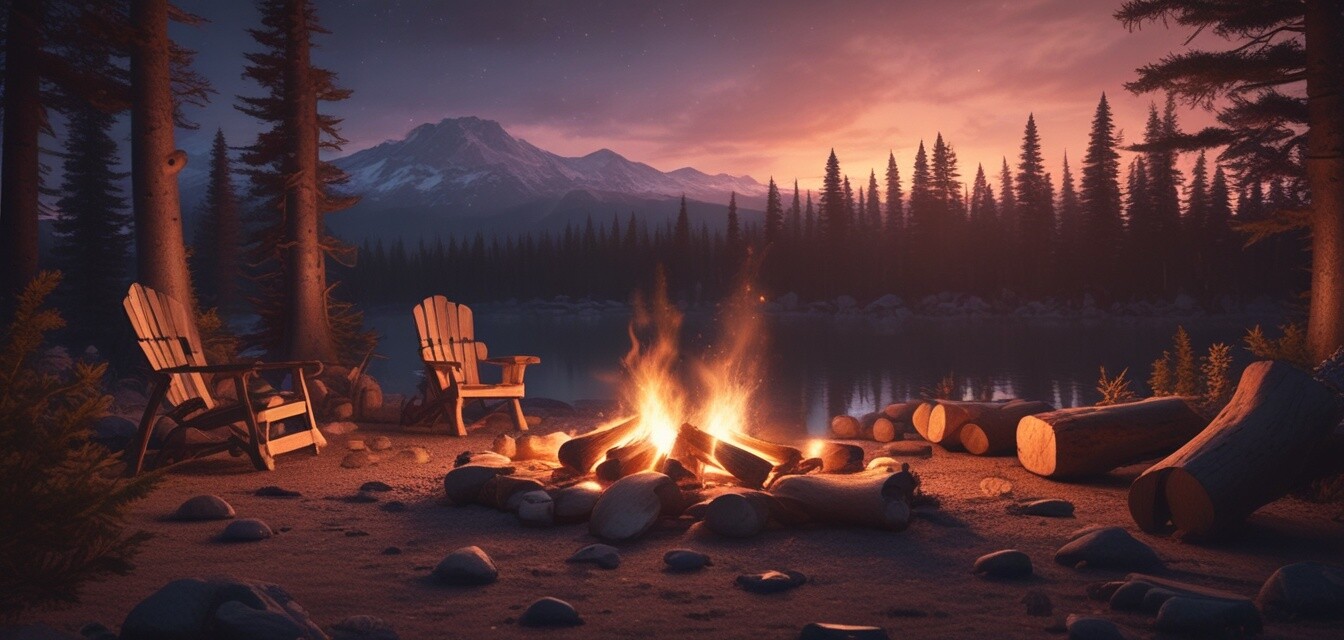
Building a campfire: Techniques for beginners
Key Takeaways
- Understand the importance of fire safety.
- Use the right materials to start and maintain a campfire.
- Explore different techniques for building a campfire.
- Learn how to extinguish a fire safely.
Building a campfire is an essential skill for anyone looking to enjoy the great outdoors. A well-built campfire can provide warmth, a place to cook, and an inviting atmosphere for gathering. However, for beginners, the idea of building a campfire can seem daunting. This article provides essential techniques to safely build and maintain a campfire, ensuring an enjoyable experience without danger.
Why You Need a Campfire
A campfire is more than just a source of heat; it plays a vital role in the camping experience. Here are some reasons why having a campfire is essential:
- Cooking: A campfire can be used to prepare meals and boil water.
- Warmth: Providing heat during cooler evenings.
- Light: Illuminating your campsite at night.
- Atmosphere: Creating a cozy and inviting gathering spot.
Fire Safety First
Before diving into the techniques of building a campfire, it's crucial to prioritize safety to prevent accidents:
- Always check local regulations regarding campfires.
- Choose a safe location away from tents, trees, and other flammable materials.
- Have water or a shovel on hand to extinguish the fire.
Materials You Will Need
To build a successful campfire, it’s essential to gather the right materials. Here’s a list of what you will need:
- Tinder: Small, easily lit materials such as dry leaves, grass, or paper.
- Kindling: Small sticks or branches that catch fire from the tinder.
- Firewood: Larger pieces of wood to maintain the fire once it’s established.
Techniques for Building a Campfire
Here are a few effective techniques for building your campfire:
| Technique | Description |
|---|---|
| Tepee | Arrange kindling in a tepee shape around the tinder. This allows air to circulate, promoting a strong flame. |
| Log Cabin | Place two large logs parallel on the ground, then stack smaller logs on top in a crisscross pattern to form a cabin. |
| Pyramid | Start with a base of larger logs and stack smaller logs at an angle towards the top, creating a pyramid shape. |
Step-by-Step Directions
- Choose a clear area away from foliage.
- Lay down rocks to form a fire ring.
- Gather your tinder and place it in the center.
- Arrange your kindling around the tinder using one of the techniques described above.
- Light the tinder and nurture the flames until the kindling catches.
- Add your firewood gradually while ensuring proper airflow through the setup.
Maintaining Your Campfire
Once your campfire is up and running, you'll need to care for it:
- Add firewood gradually to keep the fire alive.
- Rearrange logs as needed for airflow.
- Monitor the fire to ensure it stays contained within your fire ring.
Extinguishing Your Campfire
When it’s time to put out your fire, follow these steps:
- Pour water on the fire from a safe distance.
- Stir the ashes with a stick to ensure everything is wet.
- Feel the ashes with your hand to check that they are cool.
Pros
- Creates a warm and inviting environment.
- Offers a practical method for cooking and food preparation.
- Enhances the camping experience with comfort and fun.
Cons
- Requires careful attention to safety.
- Can produce smoke which may be bothersome for some.
- Building a fire requires specific materials that may not always be readily available.
Common Campfire Questions
Here are answers to some frequently asked questions about campfires:
- Do all campsites allow campfires? No, always check the campsite regulations to confirm.
- Can I use my own firewood? Often, it's recommended to use local firewood to prevent pests from spreading.
- What if it rains? A sheltered area can provide some protection, but always have a backup plan for cooking if conditions worsen.
Plan Your Next Adventure
Now that you’re equipped with essential skills for building a campfire, it’s time to plan your next camping trip. Check out our other articles for more insights:
- Essential tents and shelters for camping.
- Cooking gear that works great on a campfire.
- Guides to pick the right camping gear.
- Additional camping tips and tricks for your journey.
Final Thoughts
Building a campfire is a gratifying experience that adds to the joy of camping. Knowing the right materials and techniques allows you to enjoy warmth and camaraderie in the great outdoors. Always prioritize safety, and happy camping!